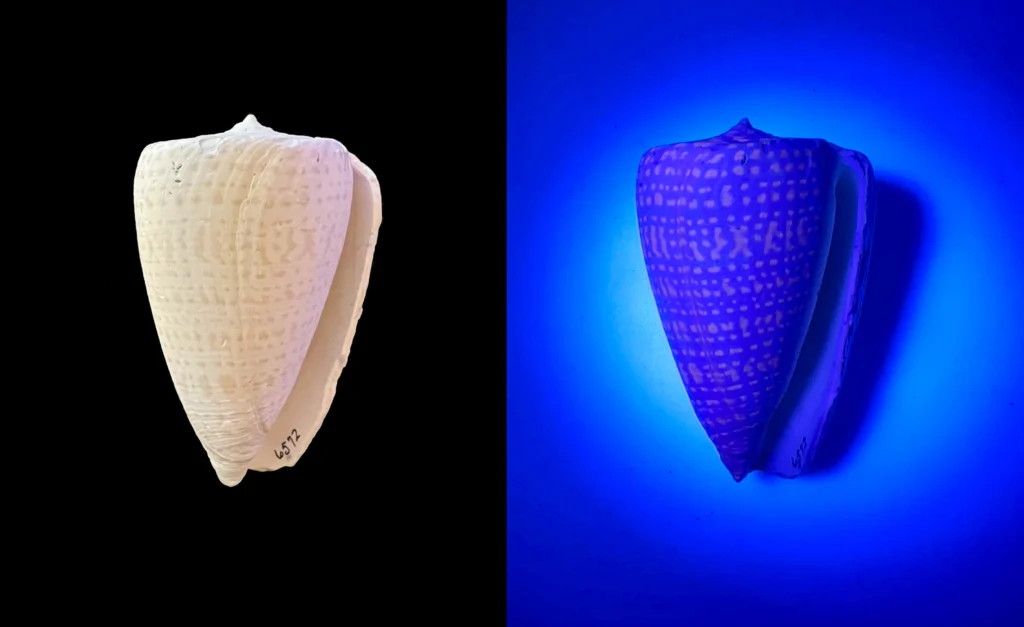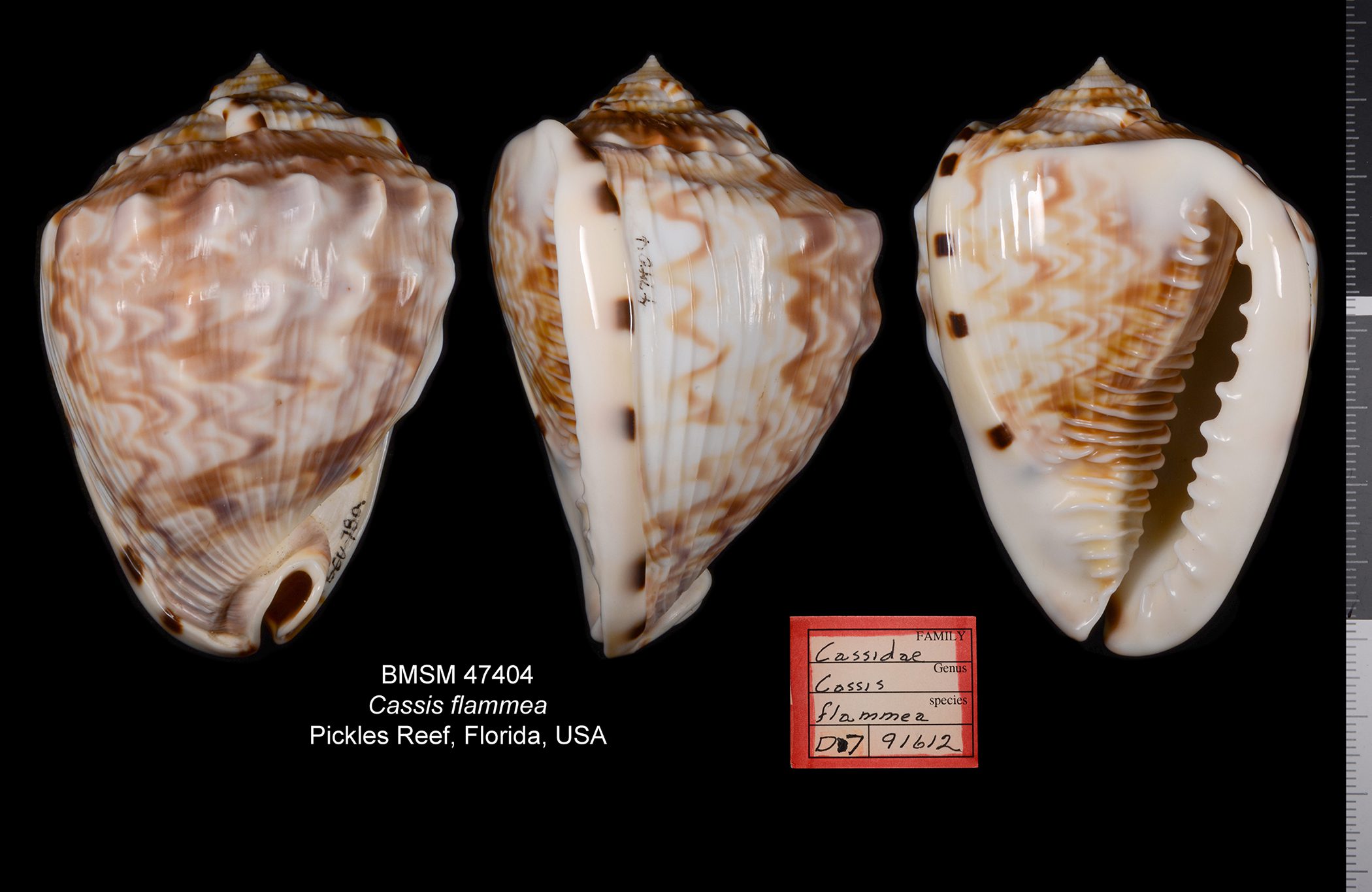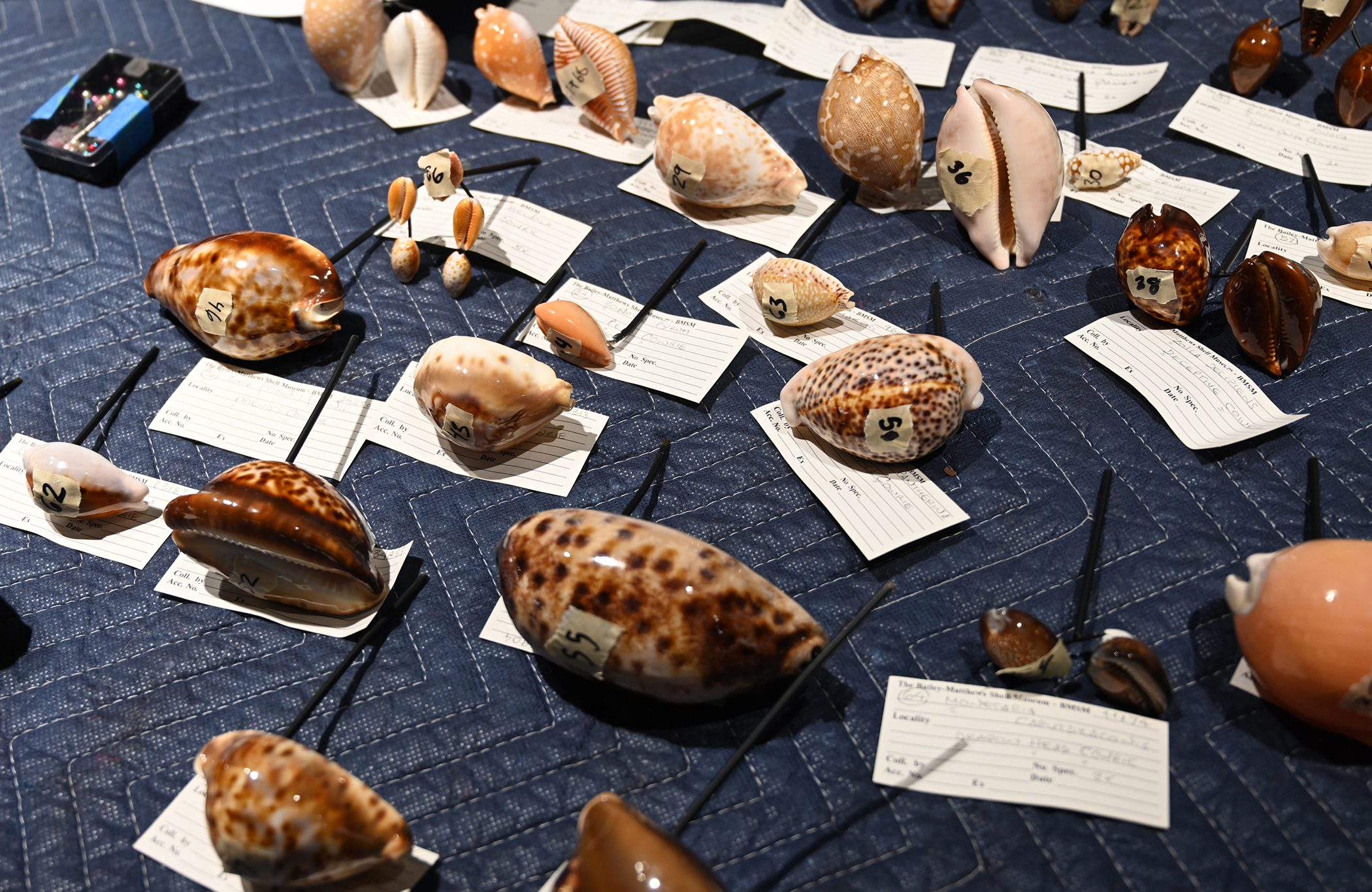Last September 13 I discussed how ultraviolet light (UV, aka “black light”) reveals structurally distinctive shell parts, using as an example the muscle scars and pallial line of a fossilized Caribbean Spiny Jewel Box (Arcinella arcinella). But UV light also exposes residual color patterns in fossil shells that would otherwise go unnoticed. Take, for example, this fossil cone shell (Conus sp.) from the old APAC fossil pits in Sarasota, Florida (possibly late Pliocene to lower Pleistocene in age).

A look under natural light (left) presents a cream-colored shell with faint spots. Imaging the same shell under UV light (right) discloses a vivid, contrasted pattern where the background color is dark, but the spots fluoresce a golden-orange color! You can replicate this simple experiment flashing a hand-held UV flashlight on your favorite fossil shell to see if it glows as this one does.
(A great article by Jonathan Hendricks further exploring the effect of UV light on cone shells can be found here).


